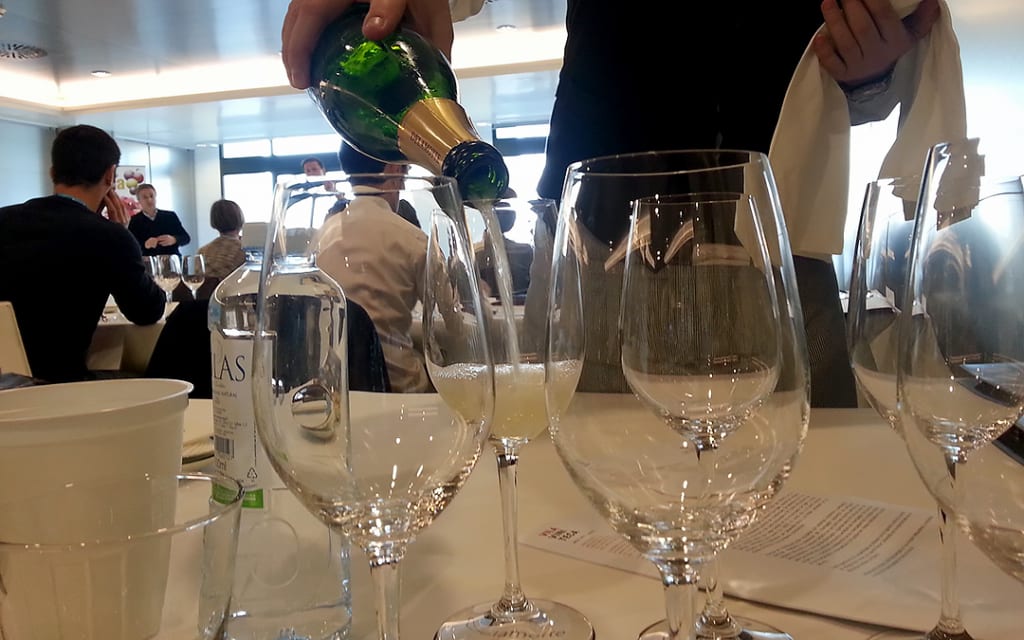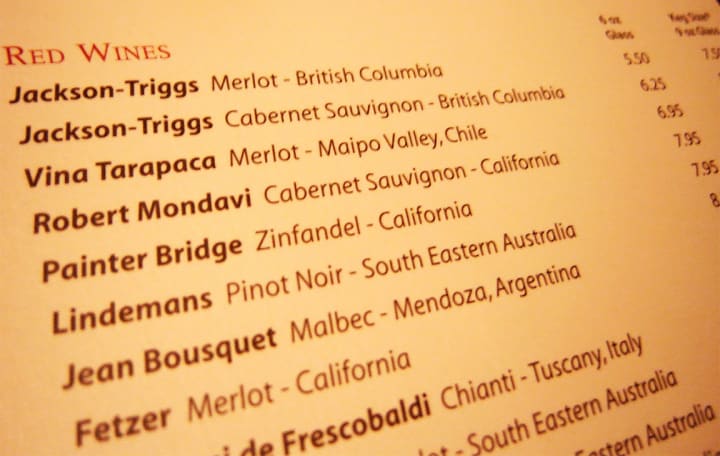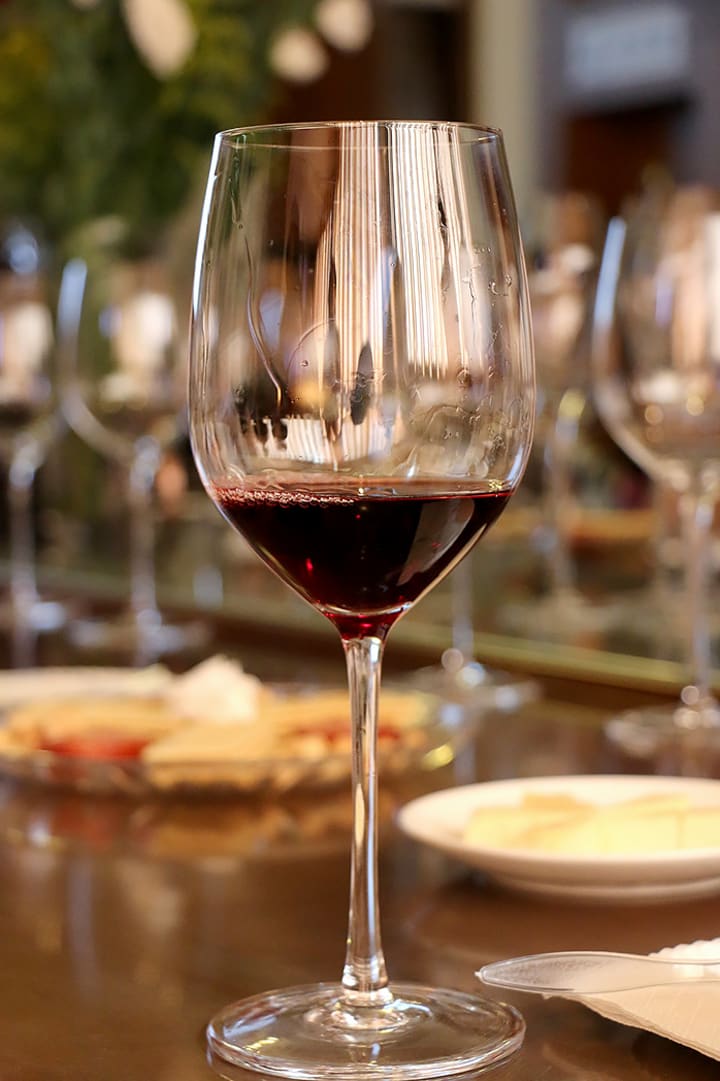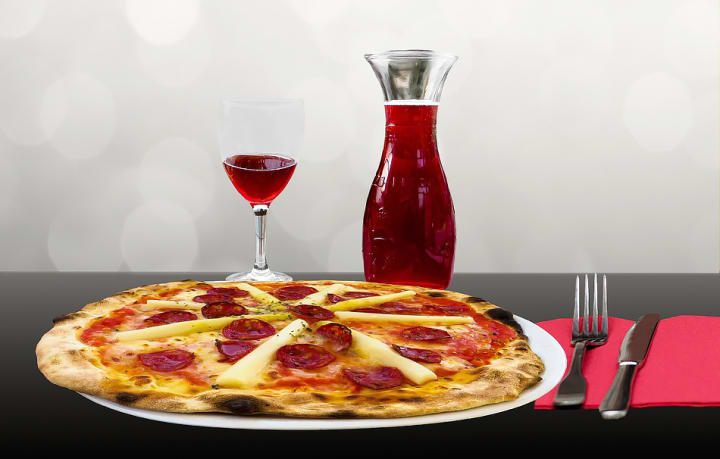Wine at a restaurant
Why does it cost so much and what can you do about it?

Food is divine with wine, so wine in a restaurant should be sublime, right?
Not necessarily.
There is an old adage in the restaurant business: “Your customers will eat you poor, but they will drink you rich.” You do not have to be a wine expert to recognize restaurants often charge twice as much or more than what the same wine costs you in a wine or grocery store. Your inner accountant says ‘whoa!’
Let’s explore strategies for enjoying wine without fearing a restaurant will ravage your bank account. Some insights into the restaurateur’s issues, too.
The why
Because restaurants must make a profit, they can’t sell wine for same price you pay for it in a store. Plus, you are not just buying bottles—you are paying for the restaurant employee in charge of selecting and curating the wines, paying for the restaurant to buy and store the wine, paying for wastage of bottles gone bad or rejected by customers, paying for providing and cleaning the vessels from which you drink the wine, paying for a server to pour it, plus other accoutrements connected to wine service.
Restaurants in many states also pay an excise tax you do not, must carry liability insurance, and face other expenses that don’t affect your store purchase.
Insight: Because some expenses of wine selection are the same no matter the price, the bottle cost usually determines markup on a sliding scale. If the retail price—which is less than the wholesale price the restaurant paid—is between $8 and $20, expect to pay at least double to triple the cost of the bottle in the restaurant. A $10 bottle becomes $25-$30 to cover fixed costs. The percentage increase may decline as the wine gets more expensive because the net profit to the restaurant increases.
Restaurant wine buying strategies

High prices for wine in a restaurant cause some to order no-cost water instead of wonderful wine, creating a lose-lose situation. Here are some insights into buying strategies for restaurant wine:
• The worst wine deals at a restaurant usually are the cheapest on the wine list.
• Restaurants often put plonk at the lowest price point. Real purpose of such placement: help sell second or third lowest-priced bottles, where markups can soar to 300-plus percent.
• Values usually lie in the middle of the wine list. Which should you order? If you have a favorite wine, it is hard to go wrong ordering that favorite. Baring that, ask for help at the restaurant. They should know what pairs with their entrées; they want you to enjoy your experience and come back. Give them a price range and listen to their suggestions. If it works, come back. If it doesn’t, try another restaurant.
• Higher priced wines on the list may not be double or triple a retail price because selling a $60 bottle for “only” $110 still is comfortable for the restaurant’s bottom line.
• Often there is a blockbuster wine atop the list. It’s a show-off offering—the establishment does not expect to sell much of it. When they do, it will be to a show-off patron.
How about wine by the glass?

Ordering by the glass seems the perfect restaurant wine strategy. But is it really? A glass is cheaper than a bottle. Pair your dish with the wine of your choice. You don’t get stuck with a disappointing bottle. It seems cheaper. But there are downsides to consider:
• By-the-glass glass clearly is cheaper than by-the-bottle, but it is not cheaper by the fluid ounce. Wine by the glass is the most expensive way to buy wine at a restaurant.
• There are five, five-ounce pours in a wine bottle. Many restaurants hope to pay for the bottle with the first pour, certainly before they finish the second. By-the-glass is four or five times as expensive as retail bottle cost, while by-the-bottle is only two or three times the retail cost. You do the credit card calculations.
• Limited choice. Only a fraction of restaurant’s list is offered by the glass. Some pours can be house wines you probably would not drink if offered free. Well, maybe if free. Maybe.
• You know nothing about storage with by-the-glass. Has the bottle been open a respectable hour, or a flavor-flushing four days? If the wine is bad, you can and should refuse it.
• Much depends on the restaurant. The finer and the more popular the restaurant, the more likely wine-by-the-glass will be acceptable. But when you get past better establishments, your chance of the wine being a pain in the glass dramatically increases.
• If the wine, particularly a red wine, is served ice cold so you can’t taste it, that is a clear tell the wine is inferior and you have been cork screwed. And/or the restaurant does not know how to do wine. Either way, that free glass of water may have been the better call.
General wine tips

Wine tips that apply universally, not just in a restaurant:
• Pair countries. Italian food, Italian wine; French food, French wine; American big, juicy steak, robust California red.
• Pair versatile wines with assorted entrées. Sauvignon Blanc with fish, chicken, pasta, pork. Pinot Noir with salmon, turkey, chicken, pork, lighter red meats.
• If it is a festive feast, consider sparkling. It lifts the mood. It pairs with everything, so it can be the pour for the whole meal. It often comes in splits—half bottles (375 ml)—so you can enjoy it at the start, then pair a second wine with the main course.
• Order/open two different bottles if there are more than two diners, especially if there is a mix of entrées. This also fits the start-with-sparkling strategy.
• Don’t fret about wine pairing rules. When in doubt, pair the diner with the dinner rather than the dinner with the wine. What you like will work even if it is not a classic wine-food pairing.
Final thought
When you go to a nicer restaurant with a good wine list, you are not going there to save money. You are going there to enjoy an elevated experience, perhaps to celebrate a special occasion. Hopefully, some of these insights and suggestions will assist you in enhancing your wine and dine event.
Last round humor
• Restaurant patron: “Waiter, I would like a bottle of wine.”
Waiter: “What year, sir?”
Patron: “Well, I’d like it right now.”
• My wife and I have the secret to making a marriage last. Two times a week we go to a nice restaurant and enjoy good wine and good food. She goes on Tuesdays. I go on Thursdays.
• We pulled into a truck stop. While my spouse gassed up, I went into the restaurant and placed a large order to go. The counter girl asked: “Will that be all for you?” “No,” I replied somewhat defensively. “Some of it is for my spouse.”
• Luke Skywalker was having trouble in a restaurant. Try as he might, using chopsticks were seemingly far beyond his fledgling Jedi skills, embarrassing himself and causing a bit of a scene. Obi-Wan Kenobi leans over and offers some wisdom: “May the forks be with you, Luke.”
• Batman’s franchise is expanding into cuisine. He recently opened a French restaurant called “The Creped Crusader.”
• During her doctor visit, a woman laments her husband seems to have lost interest in sex.
The doctor gives her a pill, but warns her it is experimental and she should slip the powder into mash potatoes at dinner and report back to him.
The next week in her follow up doctor visit: “The pill worked great! It wasn’t five minutes until he raked all the food, wine, and dishes off the table, ripped my clothes off, and ravaged me like he has never ravaged me before.”
The doctor: “We did not know the pill was that strong. Our office will pay for any damages.”
The woman: “Don’t worry about it. We are never going back to that restaurant anyway.”
Contact information
Email: [email protected].
Newsletter: https://gusclemens.substack.com
Website: https://www.gusclemensonwine.com/
Facebook: https://www.facebook.com/GusClemensOnWine/
Twitter: @gusclemens
About the Creator
Gus Clemens
Nationally-syndicated humorist/wine writer. Gus appears in Gannett USA Today newspapers and several online platforms. Writing professionally since 1969, Gus has authored or participated in 20 books in addition to his humor/wine work.






Comments (1)
valuable information.